We’re often asked what certain technical terms relating to commercial doors mean. And we get it, just because we live and breathe doors doesn’t mean everyone knows what a push plate, transom or zero threshold is.
So we thought we’d put our heads together and create a complete A-Z glossary of terms for you. And, yes, every letter of the alphabet is covered! Ready to expand your commercial door vocabulary? Let’s go!
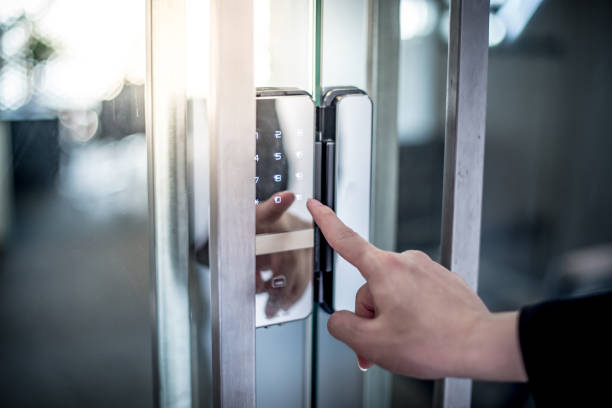
A-Z: What is an Access Control System?
A is for Access Control: Access control systems provide security by allowing or denying access to specific areas. These systems are often integrated with commercial doors, ensuring only authorized individuals can enter.
B is for Bollards: Sturdy, vertical posts typically installed near commercial doors to protect them from accidental collisions. They also serve as security measures to prevent vehicle ramming attacks.
C is for (Door) Closer: Closers are mechanisms that automatically close a door after it’s been opened. Essential for fire safety and energy efficiency in commercial buildings.
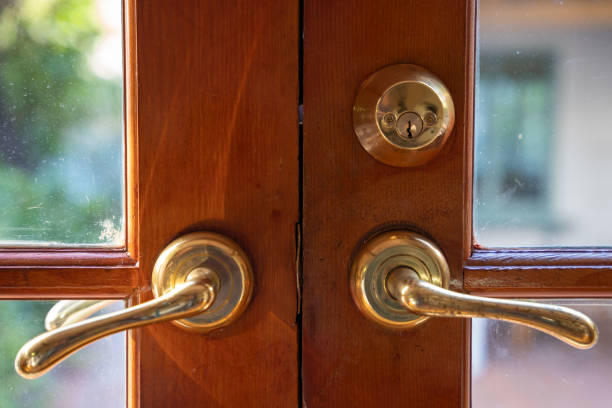
A-Z: What is a Deadbolt?
D is for Deadbolt: A deadbolt lock delivers enhanced security, engaging a steel bolt into the door frame to prevent forced entry. Commercial and residential apartment doors often feature high-security deadbolt locks.
E is for Exit Device: Also known as panic bars or crash bars, they are crucial for emergency exits. They also enable easy escape during emergencies while maintaining security from the outside.
F is for Fire Rating: Fire-rated doors are designed to withstand fires for a specified period. These doors are crucial in commercial buildings for safety and compliance with building codes.
A-Z: Why Glass Doors?
G is for Glass: Glass doors or storefronts are common in commercial settings. They provide visibility, aesthetics, and natural light while maintaining security.
H is for Hinge: These allow doors to swing open and closed. Commercial doors often have heavy-duty hinges to handle frequent use.
I is for Insulation: Insulated doors help regulate temperatures and save energy in commercial spaces. They’re vital for maintaining comfortable indoor environments.
A-Z: What is a jamb?
J is for Jamb: Door jambs are the vertical portions of the door frame to which the door is secured. They provide stability and security to the door.
K is for Keyless Entry: Keyless entry systems include key fobs and card readers, and offer convenient and secure access control for commercial doors.
L is for Latch: A simple mechanism that keeps a door closed when it’s not locked. Commercial doors often have robust latches for added security.
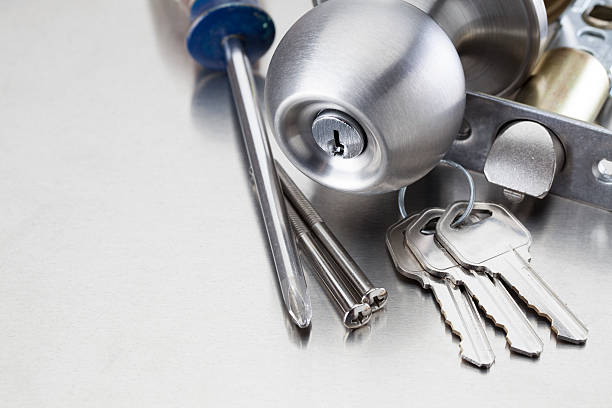
A-Z: What is a Maglock?
M is for Maglock: i.e. Magnetic locks – they use electromagnetic force to secure doors. They’re commonly used in access control systems. See A above!
N is for Nuisance Alarm: These alert you when a door is open or closed without proper authorization – and help prevent unauthorized access full-stop.
O is for Operators: Operators allow the doors to open and close with the push of a button, and are great for ensuring AODA and accessibility requirements are met.
A-Z: What are Push Plates used for?
P is for Push Plate: These are plates you push and which are mounted on doors to facilitate hands-free entry or exit. They’re often used in healthcare and food service facilities.
Q is for Quality: High-quality commercial doors are essential for security and durability – and it’s what we’re passionate about. Choosing reputable manufacturers ensures long-lasting performance.
R is for Roller Shutter doors: They provide security and protection for storefronts and commercial spaces, especially during non-business hours.
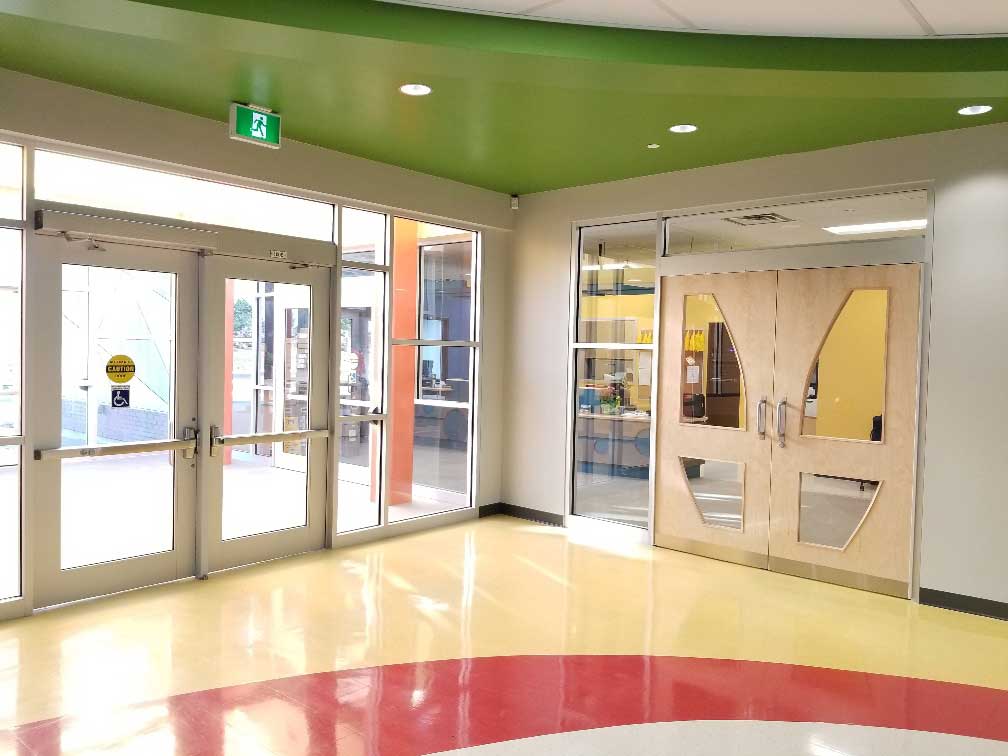
A-Z: How do you Secure A Commercial Door?
S is for Security: Commercial doors play a critical role in building security. Robust locks, access control, and materials are all vital components.
Our 2 tips for securing your commercial door?
- Get a professional locksmith to install high-security locks with snap-proof cylinders.
- Think about adding a heavy duty strike plate – the strike plate is the small metal piece in the door frame that connects to the latch bolt and powers the locking mechanism
T is for Threshold: These are found at the bottom of doors, and help seal the space below. They’re crucial for insulation and preventing drafts.
U is for Undercut: The undercut is the space between the bottom of the door and the bottom of the frame. The size can vary based on code and design requirements but its function is to let the door swing unobstructed once the final flooring is installed – and allow for airflow between rooms.
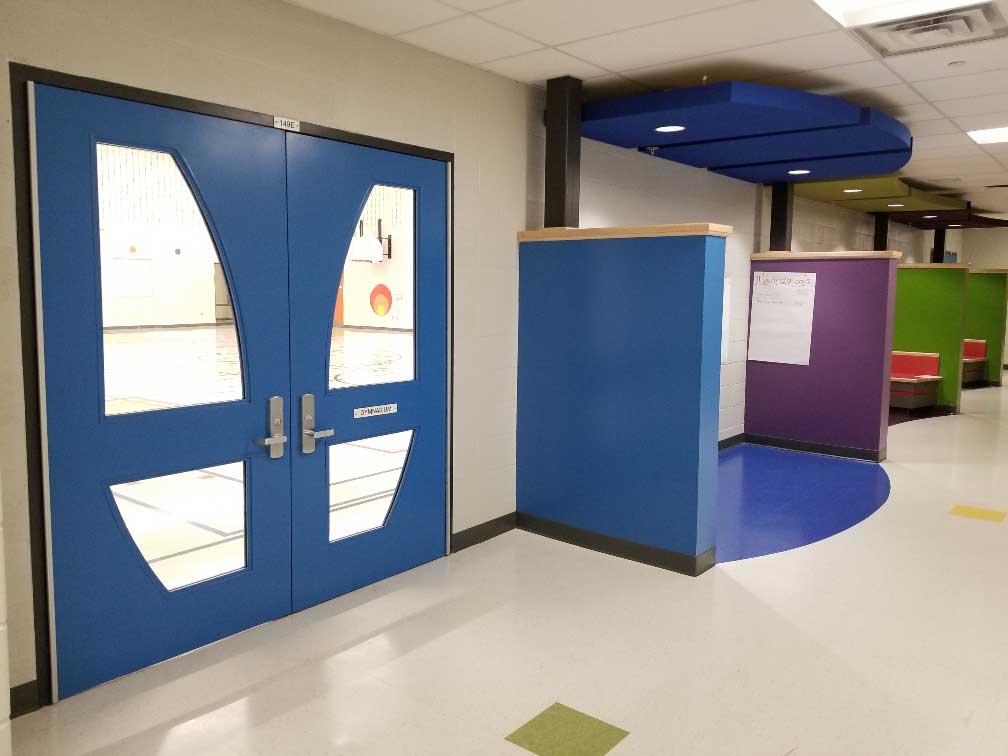
A-Z: What is a Vision Panel?
V is for Vision Panel: These are small windows in doors, allowing visibility between spaces while maintaining privacy and security.
W is for Weatherstripping: A crucial process that seals gaps around doors, preventing drafts, moisture, and heat loss – making commercial spaces more energy-efficient.
X is for eXit Doors: These doors are designed for safe and quick access during emergencies, and are typically equipped with exit devices and alarms.
A-Z: What is a Zero Threshold?
Y is for Yield: Yielding doors, often found in hospitals, open automatically when approached. They enhance accessibility and infection control.
Z is for Zero Threshold doors: These doors have no raised bottom ledge, offering easy wheelchair access and minimizing tripping hazards.
Conclusion
Whether you’re securing your business with ‘Deadbolts’ or ensuring energy efficiency with ‘Weatherstripping’, we hope you enjoyed this A-Z glossary and it has empowered you to make even more informed choices when considering your commercial doors. From ‘Access Control’ to ‘Zero Threshold,’ we believe we have everything covered – but please do let us know if we missed anything, we’re always here to help!